Outforia Quicktake: Key Takeaways
- Fjords are narrow, deep, and steep-sided inlets formed when a glacier retreats and carves the shape, which is then filled by sea water.
- They can be found in countries such as Norway, Chile, Alaska, New Zealand, Canada, and Greenland.
- Fjords can be home to cold water coral reefs and species such as fish, plankton, and sea anemones that can withstand intense water pressure.
- The world’s longest fjord is Scoresby Sund in Greenland, stretching 350 km.
- When visiting fjords, it is essential to be prepared for hazards such as landslides, avalanches, and unpredictable weather.
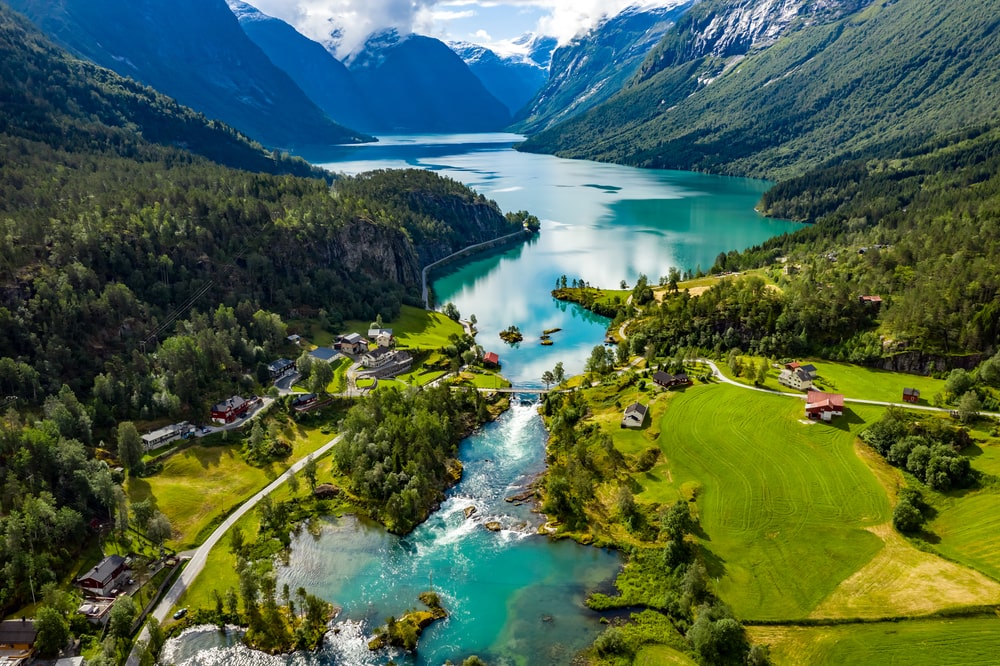
A fjord is a narrow, deep, and steep-sided inlet. It is formed when a glacier retreats and carves the shape of the fjord as it leaves. Sea water then takes its place, often extending below sea level.
The name ‘fjord’ means ‘where you travel across’ in Norwegian. In fact, Norway is a land full of fjords! The word also has roots in the word ‘ferd’ which means ‘to travel’.
Fjords can be very deep and can reach depths beyond 1,300 meters!
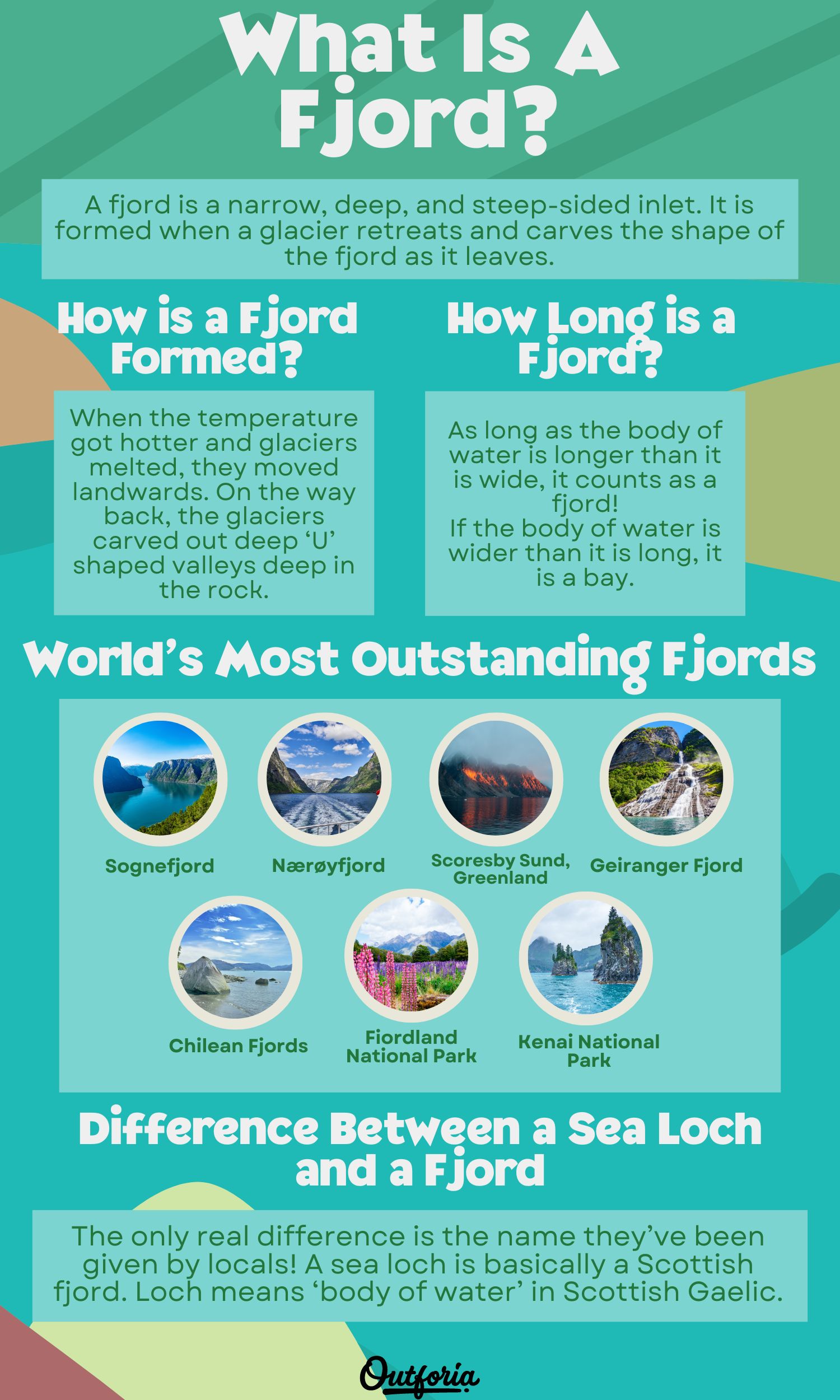
SHARE THIS IMAGE ON YOUR SITE
<a href="https://outforia.com/what-is-a-fjord/"><img style="width:100%;" src="https://outforia.com/wp-content/uploads/2023/02/what-is-a-fjord-infographics-02042023.jpg"></a><br>What is a Fjord <a href="https://outforia.com">Outforia</a>Where Can I Find Fjords?
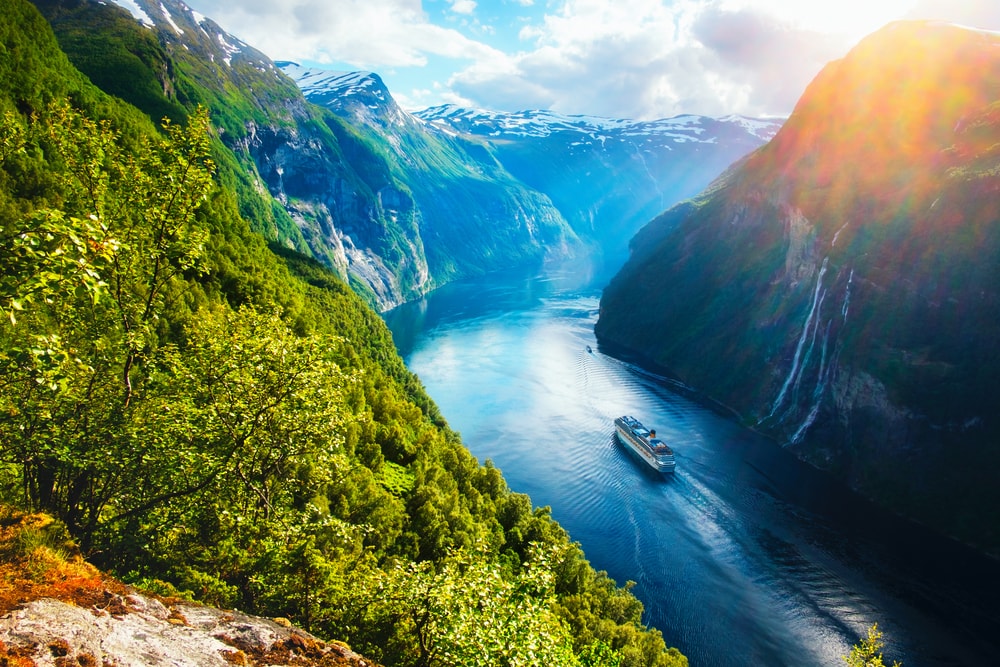
Norway is the country most famous for its fjords. You can also find fjords in Chile, Alaska, New Zealand, Canada, and Greenland. They’re most apparent in places with lots of ice.
Scotland arguably has lochs, not fjords. For example, Loch Etive meets the sea and is more like a fjord than a loch.
How Do I Pronounce Fjord?
To properly pronounce fjord in Norwegian, check out this link! It is said faster in Norwegian than it is in English. It sounds like ‘fee-ord’.
To pronounce fjord in English and American, listen to this. In English, the word is longer and more drawn out. Try ‘fee-you-ord’.
What Lives in a Fjord?
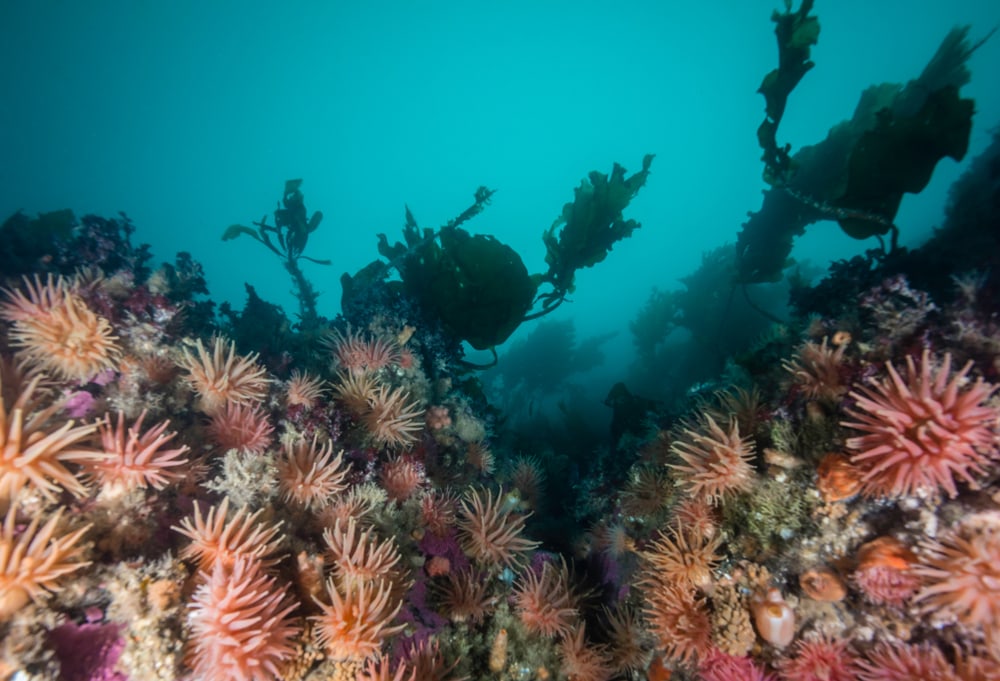
Amazingly, some fjords are home to coral reefs! These cold water reefs are most often found deep in the fjord. The animals within these reefs live in almost total darkness. However, these coral reefs have not been as well studied as tropical reefs.
Animals that live deep in fjords have to withstand immense water pressure. The farther down under the water you go, the more water pressure is upon you.
As fjords are very deep, the water pressure pushing down on a living creature can be intense! So far, we know fish, plankton, and sea anemones can survive these extreme conditions.
How is a Fjord Formed?
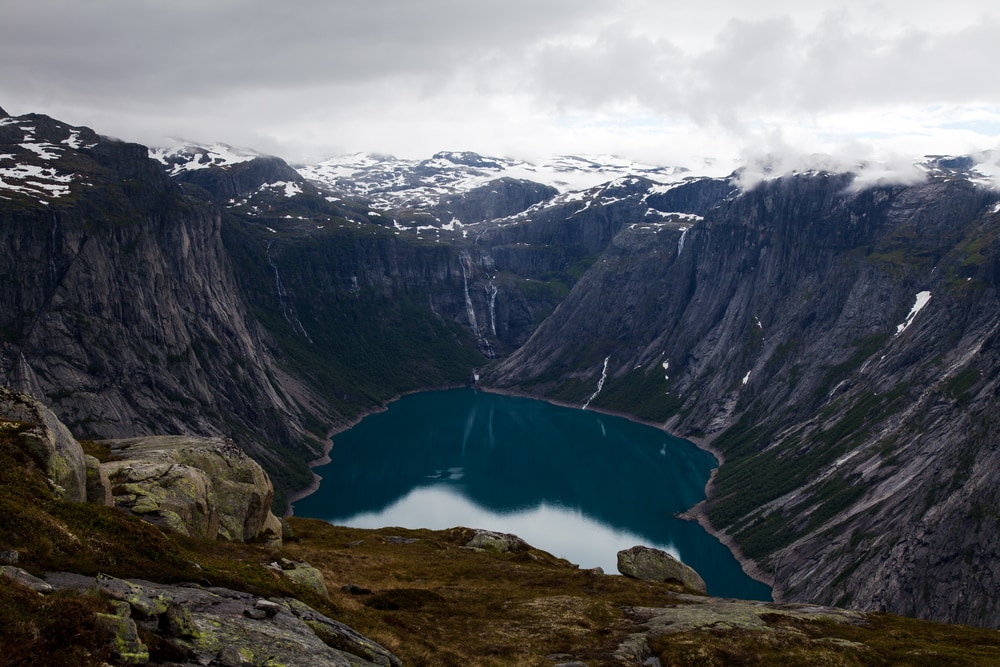
During the last Ice Age, moving ice landforms called glaciers covered much of the land surface.
When the temperature got hotter and they melted, they moved landwards. On the way back, the glaciers carved out deep ‘U’ shaped valleys deep in the rock.
Anatomy of A Fjord
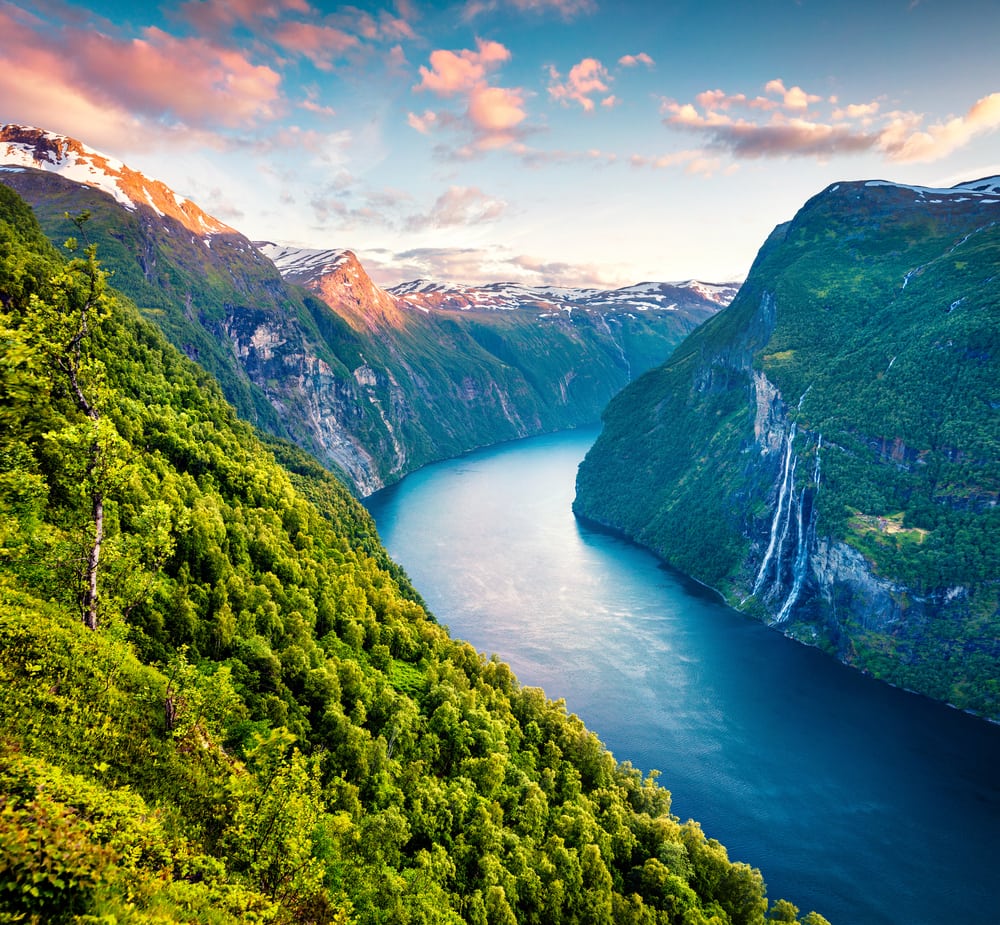
Fjords are not like a bay, as they are longer than they are wide. A bay is the reverse of a fjord!
Fjords are strange as they are shallower close to the sea, and deeper inland! This is because the glacier had more force at its source far inland.
So, it carved the deepest channel out of the rock inland. It then had less force as it receded from the mouth near the sea.
On its retreat inland, the glacier dumped its load of rock, soil, and debris at the sea mouth of the fjord. This front part of the glacier with the debris in it is known as the terminal moraine.
This means the mouth of a fjord is shallower than the inland part. This is because there is a load of glacial rubble from the terminal moraine under the water.
Skerries are also a feature to look out for in fjords. They are small islands created by glaciers. They can make it tricky to navigate if you are boating.
Here are some skerries below.
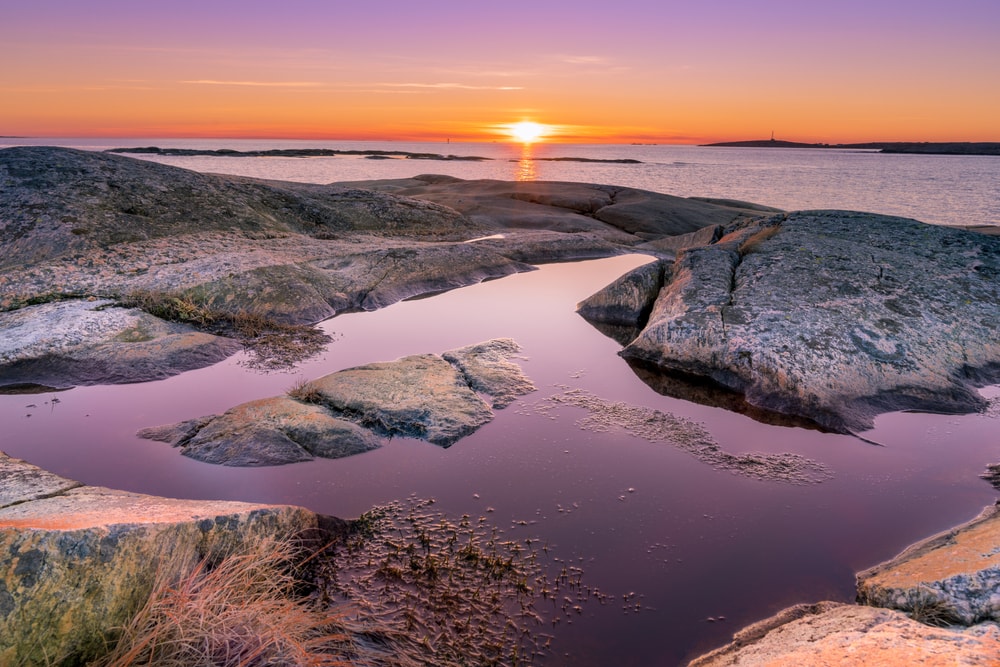
How Long is a Fjord?
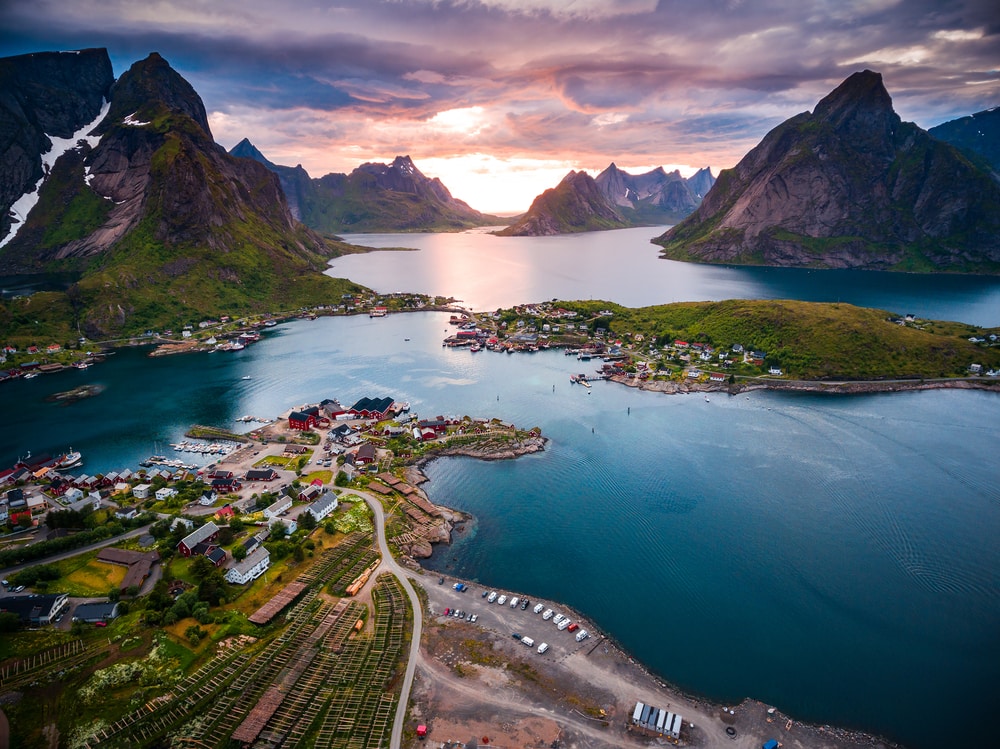
Scoresby Sund in Greenland is the world’s longest fjord at 350 km. Norway comes second, with its two famous fjords Sognefjord at 203 km (126.1 miles) and Hardanger at 179 km (111.2 miles).
There are also a great many fjords shorter than the abovementioned. As long as the body of water is longer than it is wide, it counts as a fjord!
If the body of water is wider than it is long, it is a bay.
You May Also Like: What Is A Bayou? An Intro To America’s Bayous
The World’s Most Outstanding Fjords
Here are a selection of the finest and most outstanding fjords in the world. Why not visit one of them?
Sognefjord – The Most Scenic
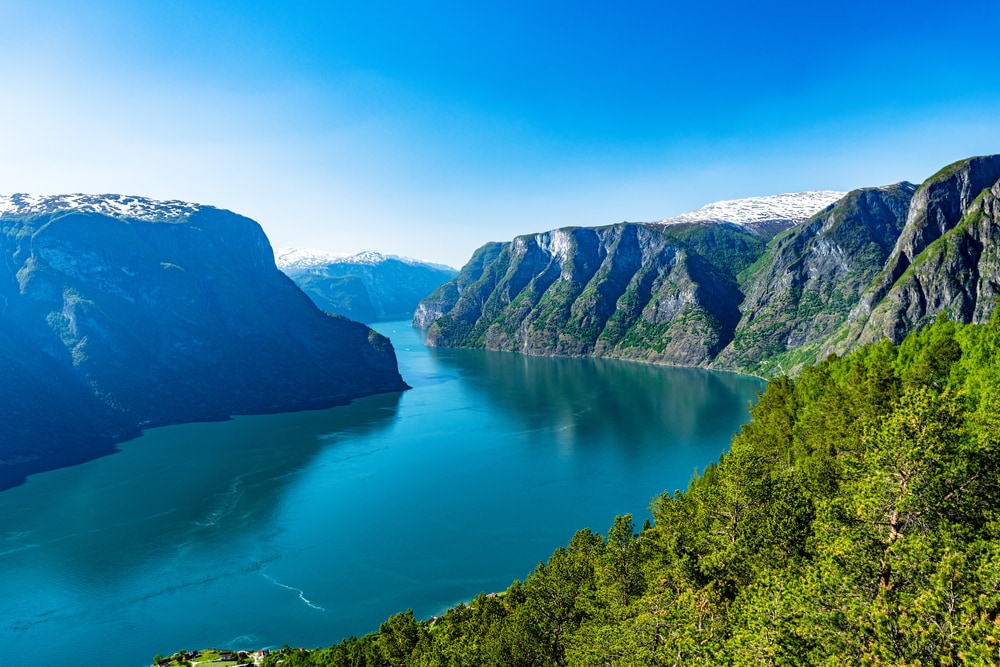
This majestic fjord is the second longest in the world. It stretches 203km (126.1 miles) from end to end starting near Bergen, Norway.
UNESCO has declared that both Sognefjord and Naeroyfjord have protected World Heritage status. This is due to the sheer beauty and uniqueness of its landscape scenery.
You can take a trip along these fjords in an electric boat or a rib boat. The electric boat is very quiet, so you can really appreciate the beauty of the rugged landscape.
Norway also has a rich mythology of Viking gods, goddesses, and mountain spirits such as trolls.
Nærøyfjord – Best for Vikings!
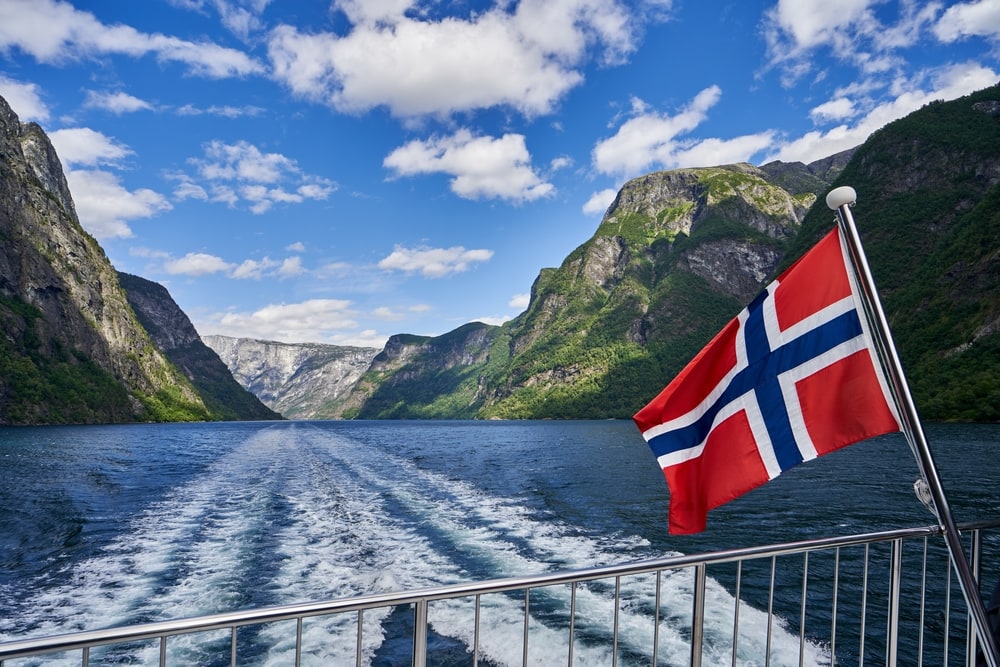
This Norwegian fjord also has UNESCO World Heritage status. It is part of the Sognefjord fjord system.
You can visit the Viking village of Njardarheimr, where the rich history of Scandinavian and Norwegian Vikings is brought to life at Viking Valley, Gudvangen. You can take part in Viking sports such as axe throwing and archery.
You can take the Flam Railway for an hour’s vintage train ride through the fjord and old town of Flam. You can also take a fjord safari by boat or hire bikes and cycle!
Scoresby Sund, Greenland – The Longest Fjord
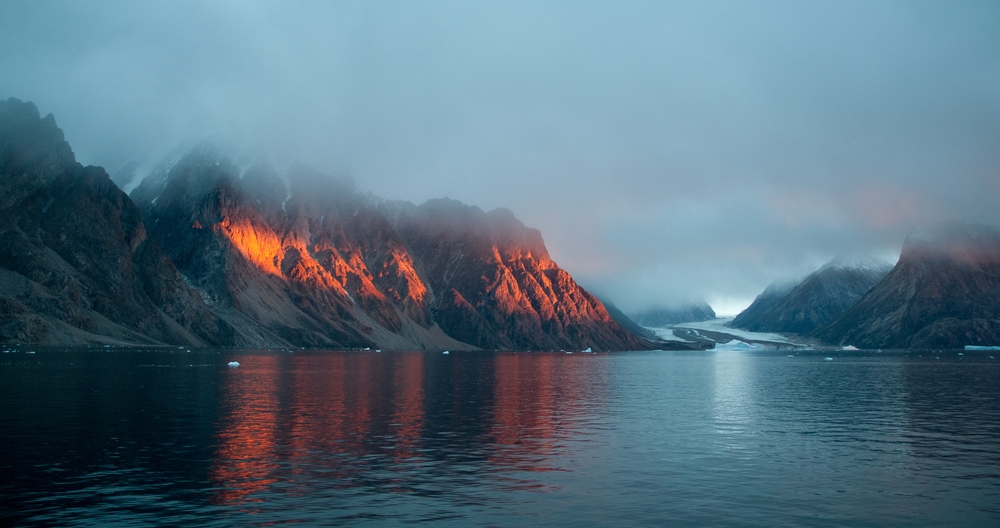
This longest of fjords hails from Greenland. The east coast of Greenland, within the Arctic circle, has a lot of fjords. It is named after English explorer William Scoresby, who mapped it in 1822.
People have been there a lot longer than that, though! The biggest settlement there, Ittoqqortoormiit, was founded by the Danish. ‘Ittoqqortoormiit’ means ‘the place with the big houses’ in the local Inuit language!
You can visit Scoresby Sund to see polar bears, musk oxen, seals, and narwhals. These are all still hunted by a few hunters. To see polar bears, check out the Northeast Greenland National Park.
This is also a great place to see icebergs!
Geiranger Fjord – Clifftop Farms & Frozen Waterfalls
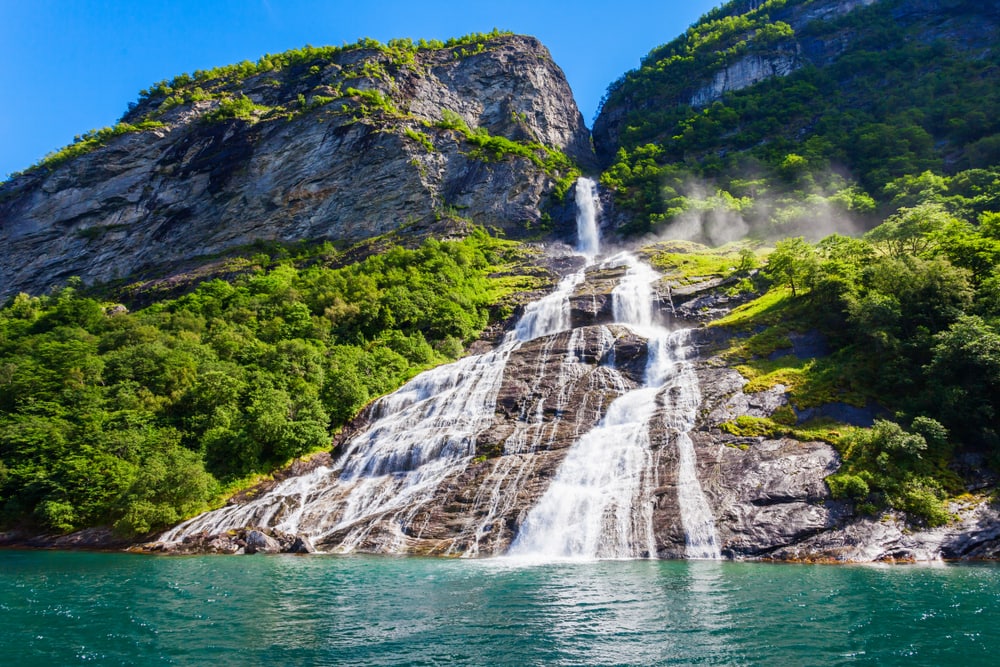
The Geirangerfjord area is home to the spectacular frozen waterfalls called ‘The Suitor’ and ‘The Frozen Sister’.
There is a Fjord visitor center explaining all about these unique landforms and how they were created. The light in this area has an effect to make everything seem magical. Especially in winter to late spring when there are less crowds.
This fjord is also famous for its clifftop farms. The tough and resilient farmers and their families managed to farm the tiny strips of land at the bottom or top of cliffs, or at the end of a fjord.
Chilean Fjords, Patagonia – Wildlife
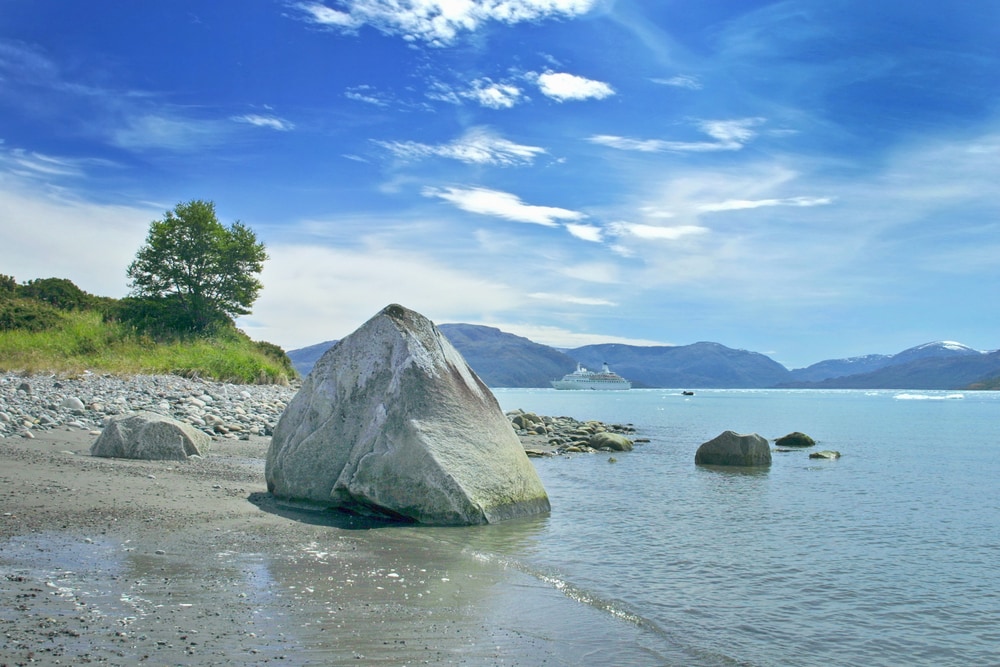
The Patagonian region of Chile is the place to go to see fjords full of wildlife. Take a lot of layers as the weather can vary from temperate to cold! You can even take a look at Pio XI, the longest glacier outside of Antarctica!
The Kaweskar National Park is near here, with a massive range of rainforest, mountains, and glaciers. You can see pumas, chilla, culpeo, gato montes, and huemul. Offshore near the fjords are vast kelp forests. They are hauntingly beautiful, and one of the richest habitats in the world.
Fiordland National Park, New Zealand – Best Legends
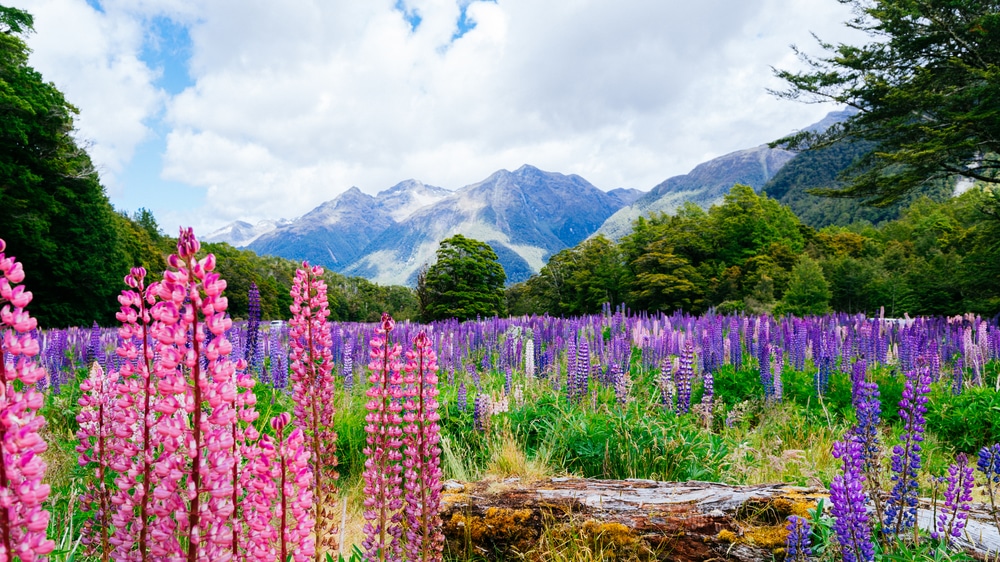
New Zealand’s Fiordland National Park contains no less than 14 fjords. There are also many majestic waterfalls to enjoy.
The indigenous Maori have a legend that tells of the Rakiwhanoa, a mythical stonemason. This powerful figure carved out the fjords with his adze!
From a more modern point of view, the Lord of the Rings trilogy was filmed here in 150 locations in New Zealand’s spectacular craggy scenery.
You can also take a helicopter tour of the park and combine this with hiking and water transport.
The fjords are around 421m deep, which are shallow compared to Norway’s). They are home to bottlenose dolphins, fur seals, and penguins.
Kenai National Park, Alaska – The Most Frozen
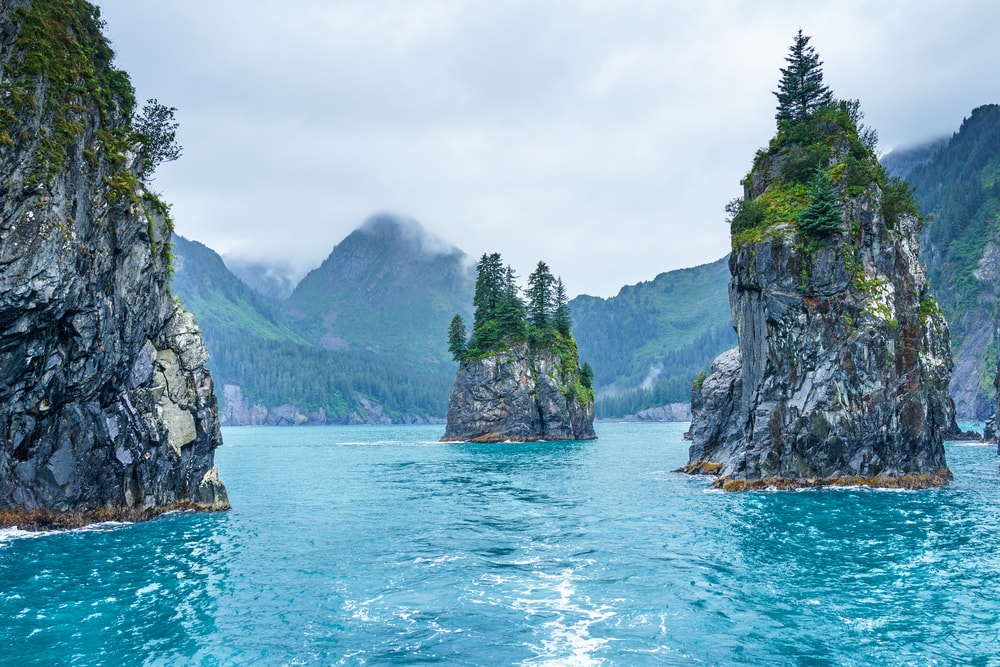
This area of Alaska boasts 40 glaciers. They flow from the Harding Icefield.
You can day hike the 13.7 km (8.5 miles) Harding Trail if you are feeling fit. You can even kayak through the fjords, or take a boat trip. This area is known for being dangerous, rugged, wild, and laced with abandoned ore mines and bears.
This is also a great place to watch brown bears hunting for salmon on their annual migration. But it’s definitely not one for the faint-hearted!
Safety When Visiting Fjords
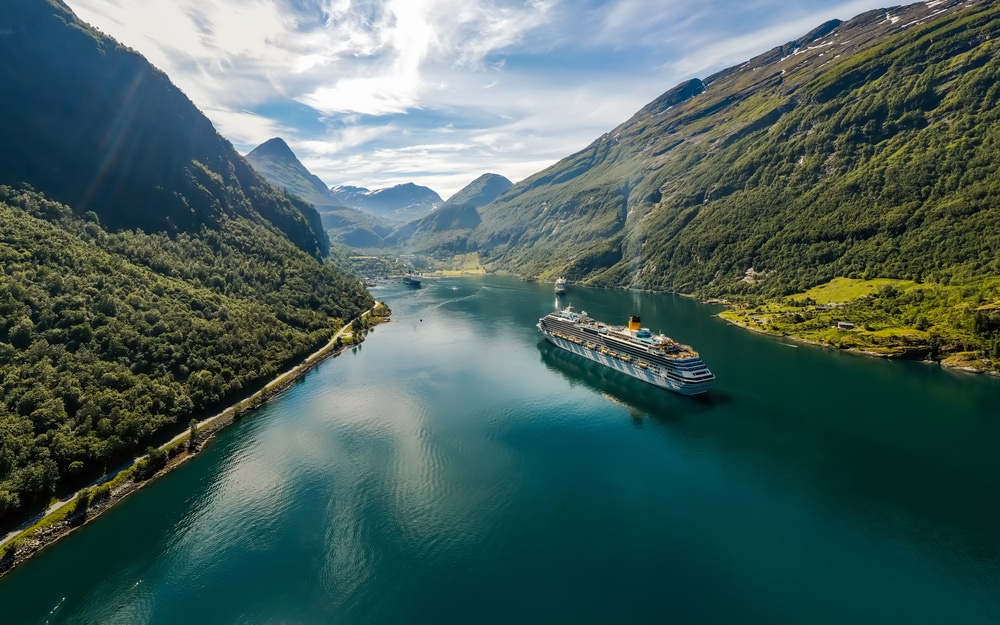
Fjords are lovely, but remember there are hazards when visiting rugged cliffs and coastlines. Here are some below.
- Landslides/avalanches – be aware of these when driving close to clifftops. Many roads in Western Norway close during the winter due to the risk of landslides or avalanches.
- Mobile phone coverage – this can be very poor due to the remote landscape and deep cliffs. Check your mobile network provider’s coverage and ask local guides about this. Bring an extra battery and/or an extra mobile charging unit for your phone.
- Kayaking hazards – go with a group, and take some kayaking courses first. Keep a safe distance from cliffs where rockfalls might happen. Check the weather and wear a life jacket, too.
- Changeable weather – read the Norwegian (or other country’s) Mountain Code if you plan to go hiking. Many routes are too long for children or frail people.
Make sure to wear clothing appropriate for the season. Take a map and compass as the weather can get foggy.
- Skiing hazards – avalanches are common. Avoid terrain steeper than 30 degrees and check the Avalanche Forecast. It’s advisable to wear a transmitter and go in a group.
- Glacier calving – don’t walk in front of the leading edge of a glacier. This part can ‘calve’ when a part of it breaks off. Some people have died due to a rush of tsunami-like water from under the glacier, as with fatalities on Nigardsbreen Glacier.
- Swimming hazards – make sure you are near a place where you can get out easily, as the cliffs make it difficult for swimmers to exit the water. The water can be very cold, so take a float and/or a wetsuit and some friends.
Why Does the Water in Fjords Change Color?
Fjord water sometimes goes different shades of green or sometimes pale blue.
Green Fjord Water
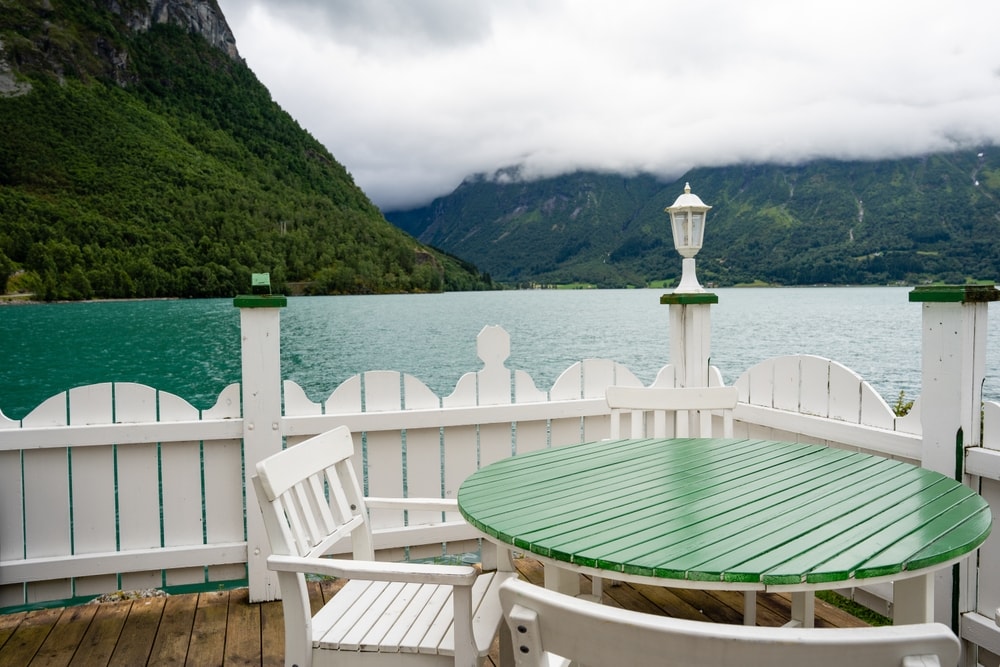
If the water goes green, this is a sign of an algal bloom. This is when lots of tiny one-celled plants grow in the water. This algae is called Emiliania huxleyi. It can turn some fjords deep green in the early spring. A good example is Hardangerfjorden.
Blue Fjord Water
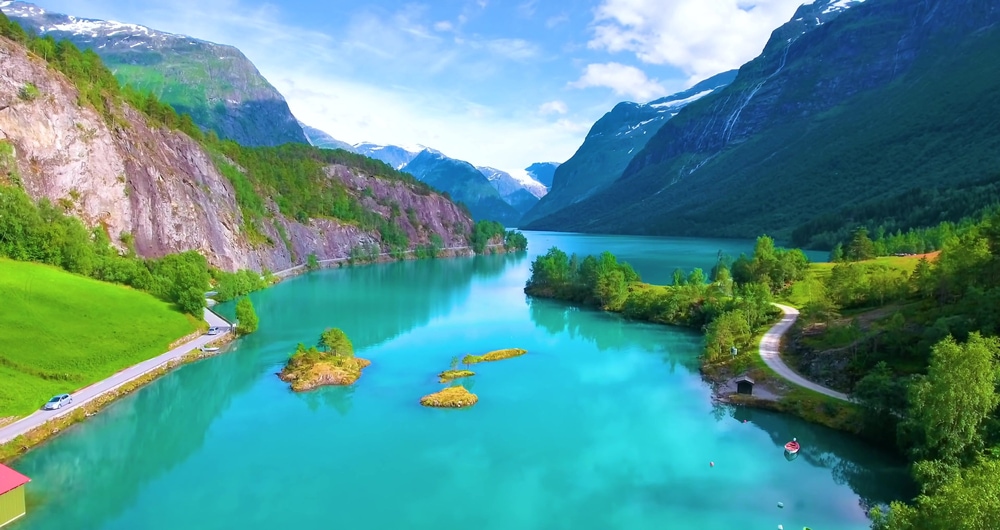
The water melting off the glaciers has a high mineral content. This shows up as a light blue color from far off. The minerals form a sort of sediment in the water, which is why you shouldn’t drink glacier water.
This happens during early spring when a lot of snow and glacier ice melt and enter the fjord. This is also when you can see the biggest area of light blue in the fjord.
You May Also Like: Transport By Water: What Is A Canal?
Can I Drink Fjord Water?
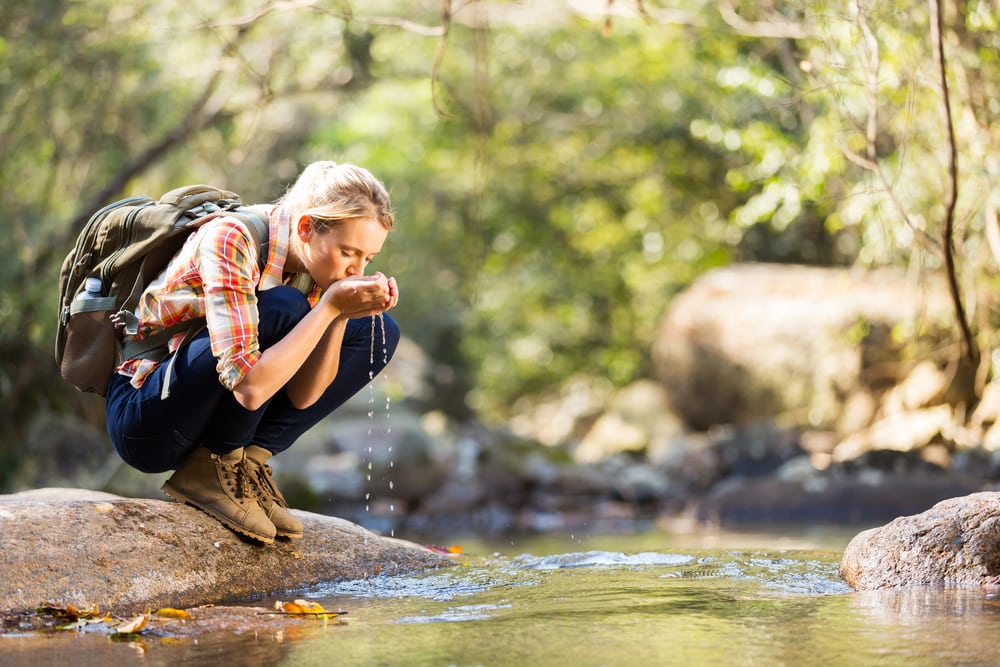
Drinking fjord water is not a good idea. This is because fjord water is a mix of fresh and sea water. This is known as brackish water. It still contains a lot of salt. Plus everything else that’s floating around in the ocean!
Drinking water with salt in it is never a good idea! It will only dehydrate you.
Even at the glacial end, the glacier water is not regarded as clean enough to drink. That’s because there’s a lot of debris in it.
If you want to drink water near a fjord, look for a small mountain stream coming from above. The higher up and smaller the stream, the better.
Do Fjords Freeze Over in the Winter?
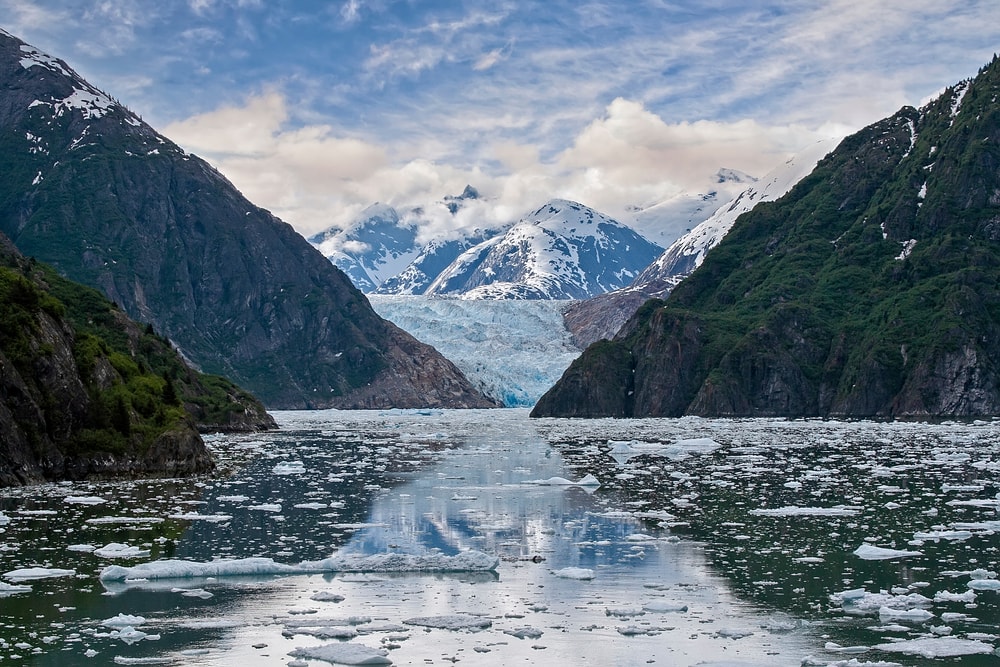
Surprisingly, many of Norway’s fjords don’t freeze in the winter!
This is because the warm currents of the Gulf Stream flow around the coastline of Norway. The Gulf Stream creates a warm area where the water does not freeze. Because of this warmth, the area around Norwegian fjords is rich in wildlife.
Fjords are much more likely to freeze over towards the Arctic end.
Ice also forms further inland and in the smaller fjords. This is due to a layer of brackish water on the surface of the fjord. This stops the water mixing and keeps it still, encouraging ice.
Alaska’s Kenai region boasts 40 glaciers. Fjords here are much more likely to freeze over!
What Kind of Wildlife Can I See In and Around a Norwegian Fjord?
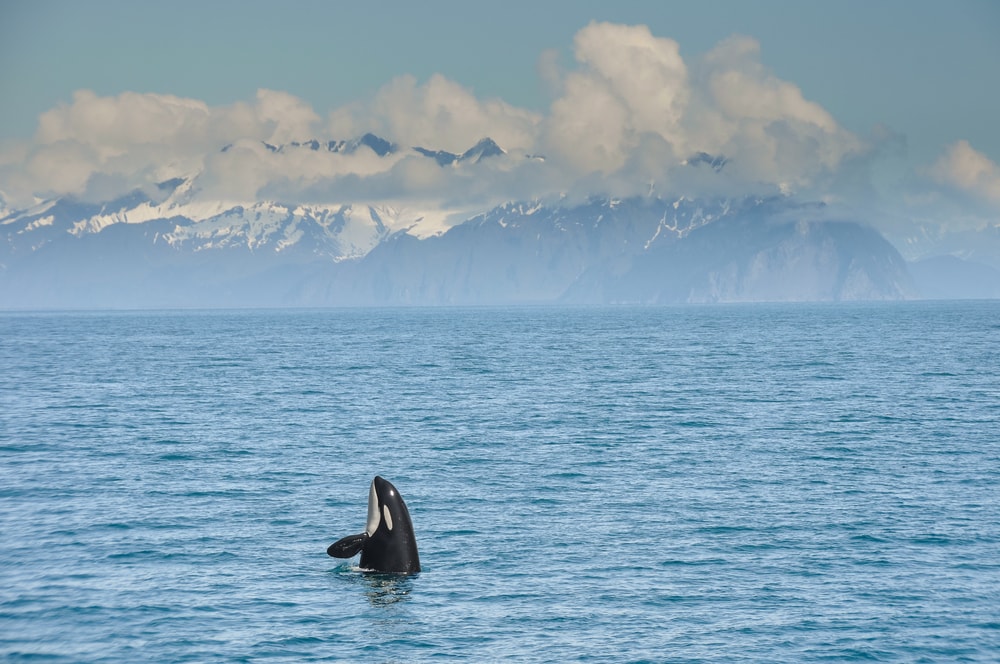
Norwegian fjords are home to basking sharks, white-tailed eagles, and harbor porpoises (dolphins). Many other species of birds can also be found here.
They are home to several species of fish and invertebrates that live in deep water with very little light.
Basking Sharks
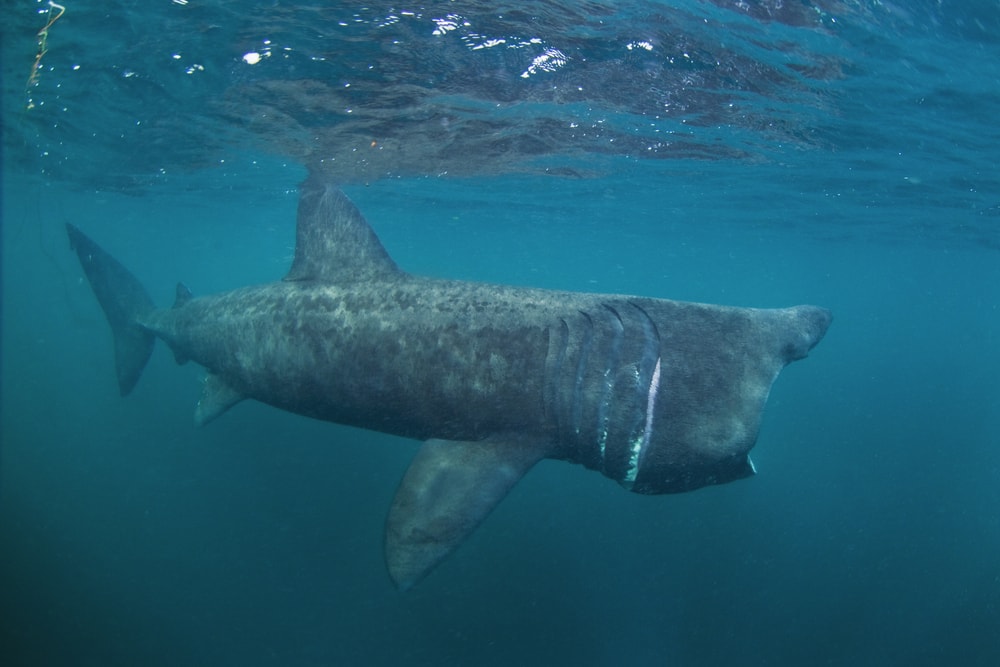
These gentle giants (Cetorhinus maximus) look terrifying and can grow up to 25m (82 ft). They can easily weigh 5 or 6 tonnes (5.5-6.6 tons). They are harmless to humans however, eating only tiny sea creatures called zooplankton. They filter feed, slowly swimming along with their big mouths open wide.
Their massive gills are complex filters. In the past, they were hunted until threatened. Now, they are still hunted in some areas for use in shark fin soup.
They are gentle, but don’t try to stroke them – their skin is very rough and could cut you!
White-Tailed Eagles
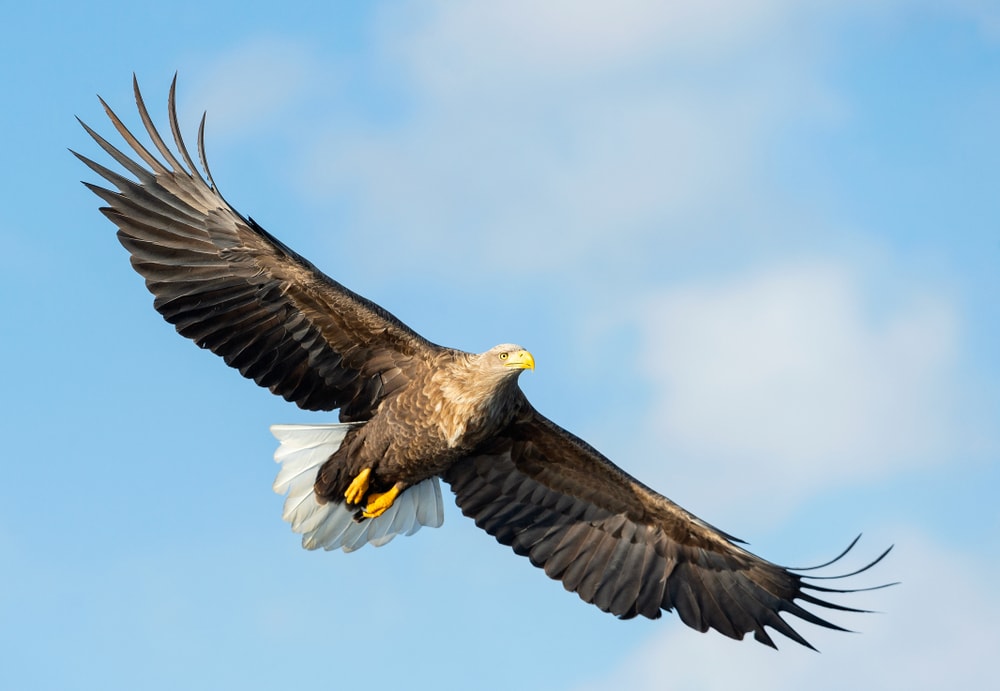
This raptor (bird of prey) has a broader wingspan than the golden eagle. It is extinct in the UK but was reintroduced to Scotland from Norway. It is also known as the sea eagle.
Adult eagles have a white wedge-shaped tail and a yellow bill, with a pale head. A white-tailed eagle’s territory may stretch up to 70km (43.5 miles)!
Harbor porpoise
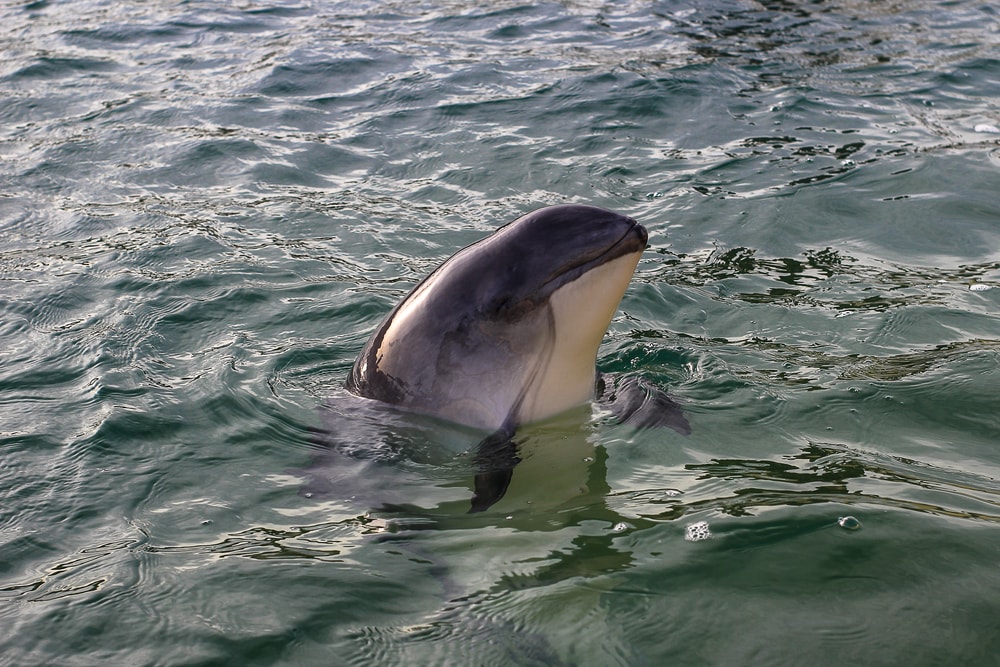
The harbor porpoise (Phocoena phocoena) is not actually a dolphin, but it is closely related to them. Porpoises are known to have shorter noses.
It is shy and travels in groups of 2 or 3. Sometimes, you may see large groups of up to 200 when they are following migrating fish!
They like cold temperatures to Arctic water. They do not like loud noises! Unlike bottlenose dolphins, they are too timid to bow ride on ships.
What Kind of Wildlife Can I See in a Chilean Fjord?
Chilean fjords are home to sea lions, king and Magellan penguins, and stubby-legged steamer ducks. On land, you can expect to see Guanacos and Pudus (a type of deer). Plus a whole lot more!
King Penguin
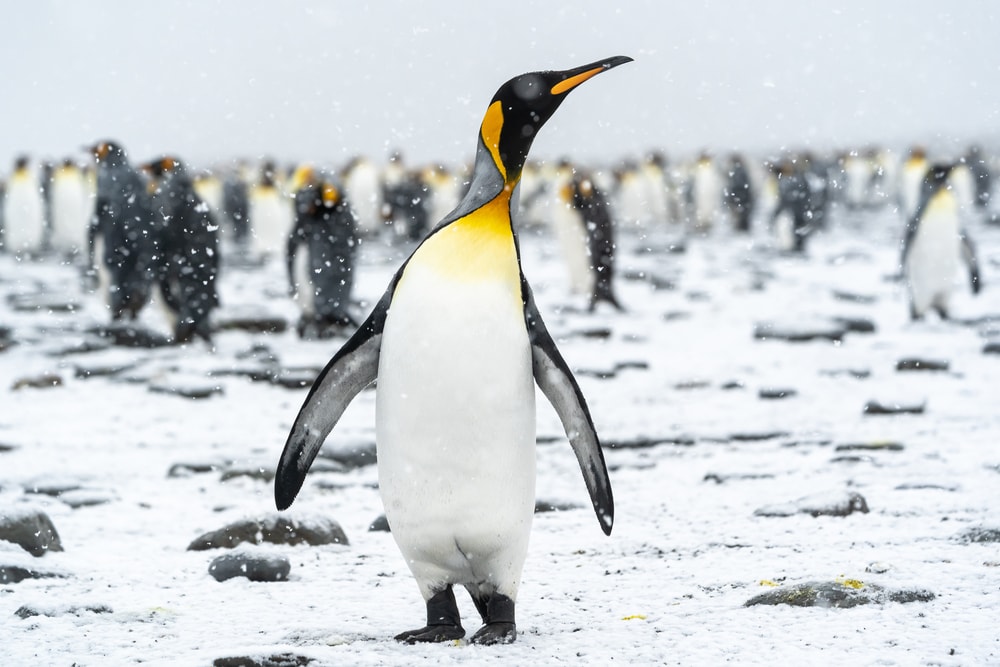
King penguins are the second largest penguin in the world (after the emperor penguin). They lay a single egg each breeding season and nurse it on their feet and under a brood pouch. Both the male and the female take turns looking after the egg.
King penguin chicks have an adorable gray wooly coat. They stay in creches guarded by some of the adults, while their parents go off and fish!
They look so different from the adults, they are listed in 19th century books as being a different species from their parents!
Adults have an orange-yellow throat above a white bib, with dark gray on their back and sides.
Magellanic penguins
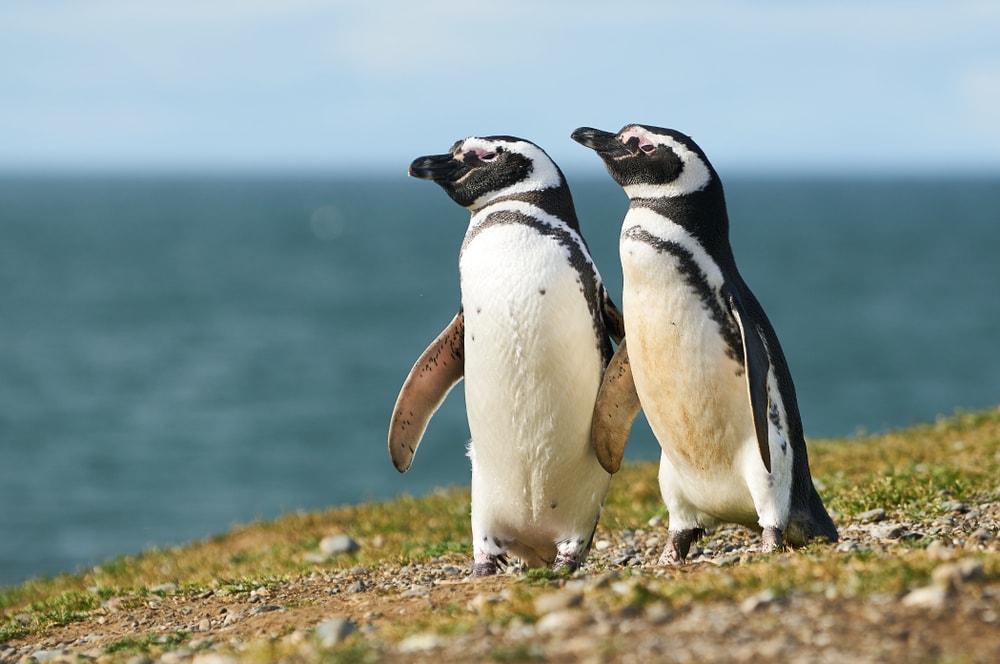
These black and white striped penguins are much smaller than king penguins. They forage in groups, munching small fish such as sardines and sprat. Orcas (killer whales) hunt them, tipping ice floes to snatch the penguins at rest.
They lay two eggs each clutch and nest in burrows on rocky shorelines.
Check out this video of a penguin escaping orcas by jumping into a dinghy here!
Stubby Legged Steamer Duck
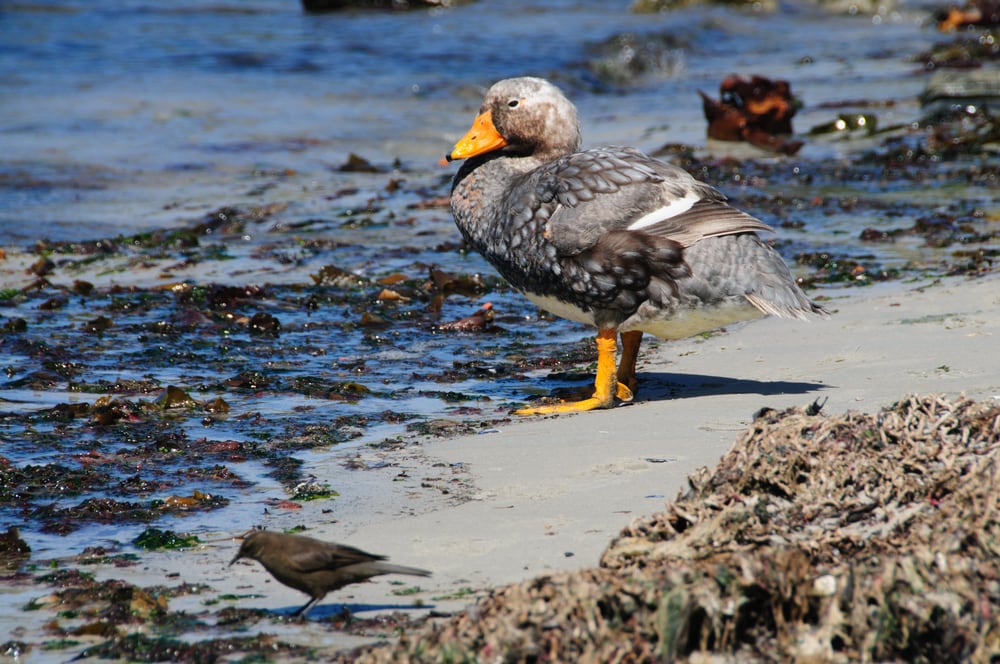
There are several species of Steamer ducks, all living in and near Chile. Many of them are flightless due to their short wings.
The flightless steamer duck eats crustaceans and shellfish, diving for them into the kelp forests. It has thick ‘elephant-like’ legs, hence the name! It’s known in Chile as ‘Quetru no volador’, which means ‘no-flying duck’.
Males and females have an orange bill. Steamer ducks aso have spurs on their stubby wings, which are used in fights!
You May Also Like: What Is An Estuary? Estuaries Around The World & More!
Hiking In and Around Fjords
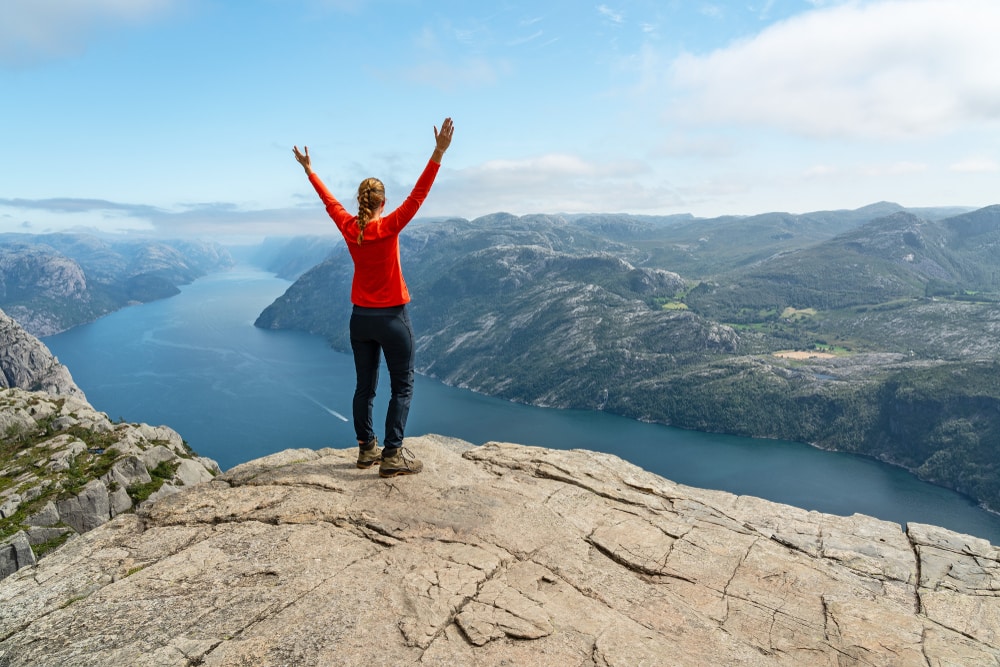
Fjords have interesting walks and breathtaking scenery, which make them great places to go hiking. Many of the paths can be challenging, so check whether children and more frail adults are able to finish a particular walk first.
Be wary of local weather conditions and landslide risks. And always remember to check with local guides and with the Avalanche Forecast.
It’s a good idea to bring these things with you when hiking around fjords:
- Compass
- Map
- Hiking jacket
- Hiking boots
- First aid kit
What’s the Difference Between a Sea Loch and a Fjord?
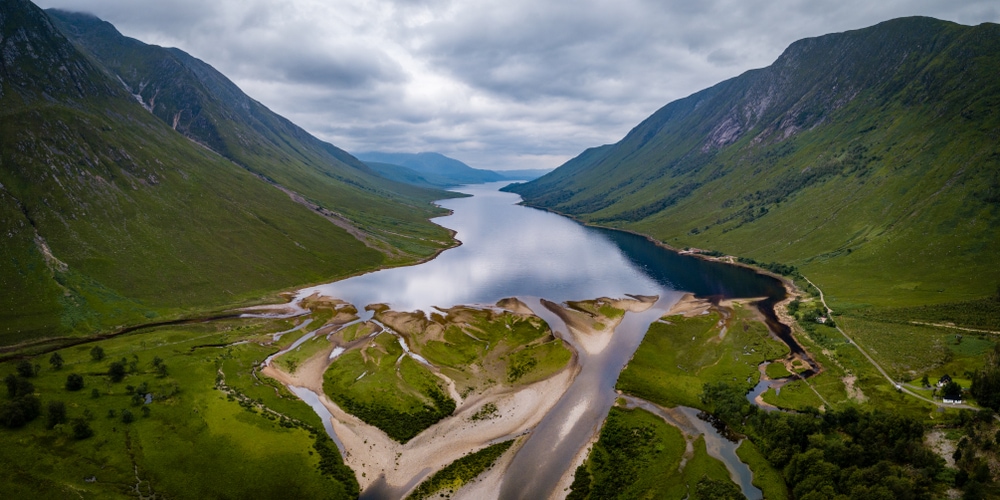
Scotland’s Loch Etive is a sea loch. A sea loch is a lengthy arm of the sea that projects, often quite far, into the land mass.
So, why isn’t this a fjord? To the casual observer, they look very similar. Especially because both these features were formed by retreating glaciers.
The only real difference is the name they’ve been given by locals! A sea loch is basically a Scottish fjord. Loch means ‘body of water’ in Scottish Gaelic.
The Geiranger Fjord
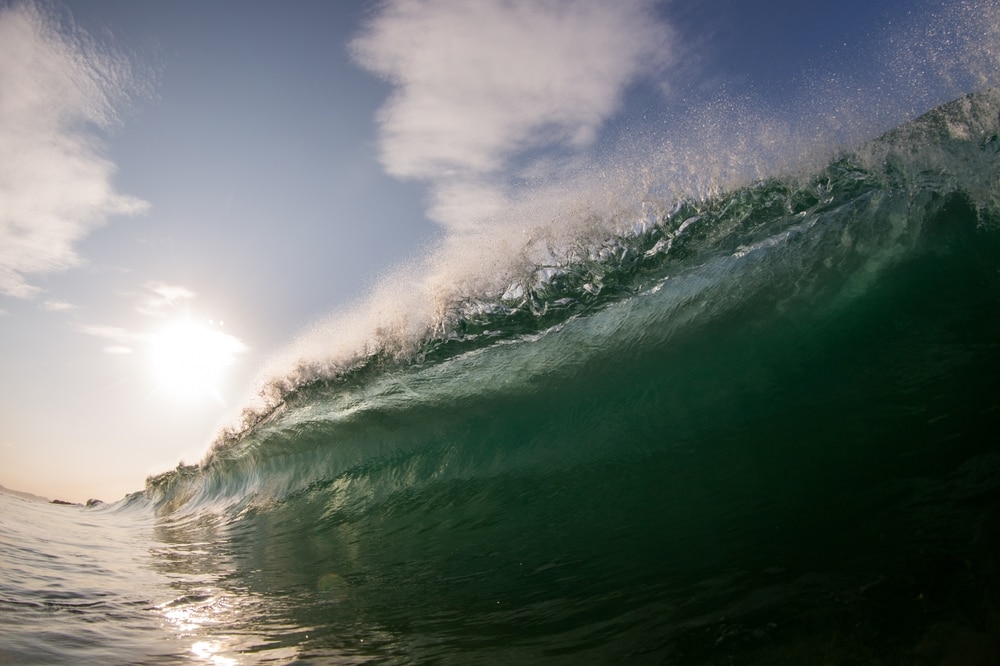
Norway’s Geiranger fjord is threatened both by manmade and natural hazards.
The nearby mountain Akerneset will at some point in the future erode a lot of rock into the fjord. This will cause a tsunami that will destroy the local towns.
A power grid will also be built in the area, with highly visible power lines.
This sort of disaster has happened before. On February the 7th, 1934, part of the mountain cracked at Langhammaren in Norway and crashed into the sea, with a force amounting to three million tonnes. It fell from a height of 700 meters (765.5 yards) into the fjord water.
This made three giant waves of around 60 meters (196.9 ft) in height. They raced toward the towns of Fjøra, Tafjord, and Sylte.
Around 40 people lost their lives. It would have been more, but awareness of the crack in the mountainside and quick thinking saved many families, who made for higher ground.
Diving for WW2 Ships and Aircraft in Norway’s Arctic Fjords
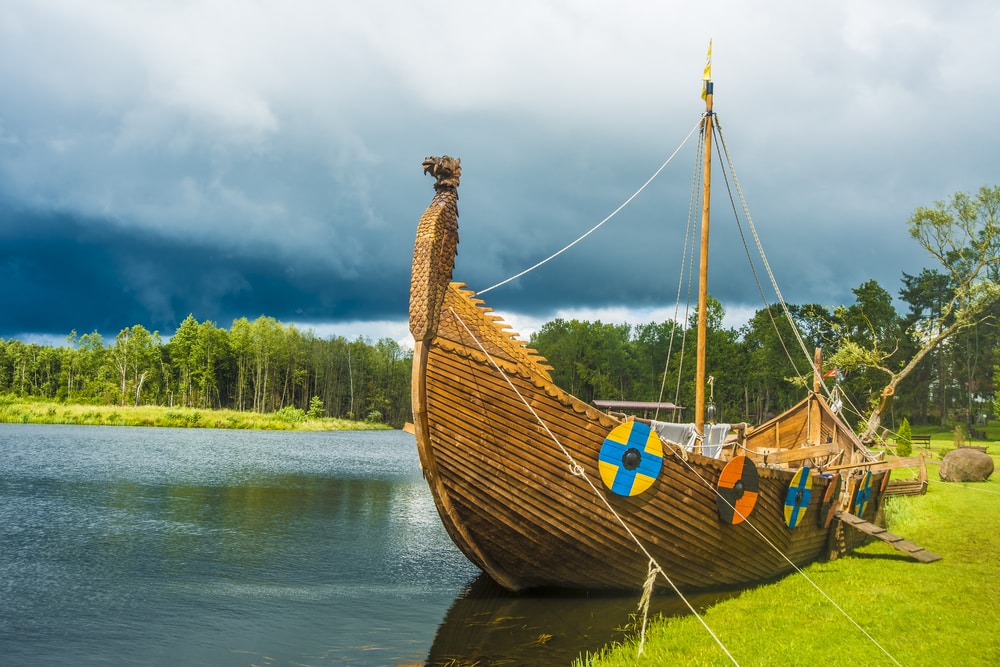
History buffs will enjoy the stories of crashed WW2 fighter and bomber planes and warships that now lie at the bottom of Norway’s fjords.
More than 12 wrecks have been found so far near Kirkenes in Norway.
Kirkenes was vital strategically as it was only 250 km (155.3 miles) from Murmansk, the stronghold of Russians fighting off the Germans. Without this resistance, German forces would have been free to concentrate their forces on other fronts.
Researchers use sonar to locate the wrecks of Russian and German craft. There are many more still to be discovered in the icy waters, which freeze solid every winter.
What is a Fjord FAQs
Are fjords good places to go boating?
Fjords are great places to go boating. They were and are often used as natural harbors as they created shelter from winds and adverse weather.
The three sides are protected by steep rock formations, whilst the mouth of the fjord is protected from strong seas by the underwater piles of glacial debris. Just watch out for the small skerries (rocky islands).
Are fjords good places to go fishing?
Fjords are great places to fish in. Norway has a coastline longer than the equator due to the number of fjords! You can stay in a traditional rorbu (fisherman’s cabin) and catch skrei (migrating cod).
You can also catch halibut, sea trout, mackerel, ling, tusk, and monkfish. You can also go on a king crab hunt or just watch them on a safari. Do check you are allowed to fish certain species (such as cod) in the area you are staying in.
Are fjords dangerous?
Cliffs and steep rocks can be dangerous due to landslides and avalanches. Though the waters in fjords tend to be sheltered compared to open sea, you still need to be aware of the danger of grounding on small islands if you are boating.
Can I go swimming in a fjord?
As long as you enjoy cold water, you can swim in a fjord! Even in summer, the water will not get warmer than 19 C (66 F) and more likely be around 14 C (57 F).
At other times, it will be close to freezing. It will be coldest at the land end, where the icy glacier meets it. As with other activities, go in a group, and wear a wetsuit/drysuit and a swim float in case you get cramps.








